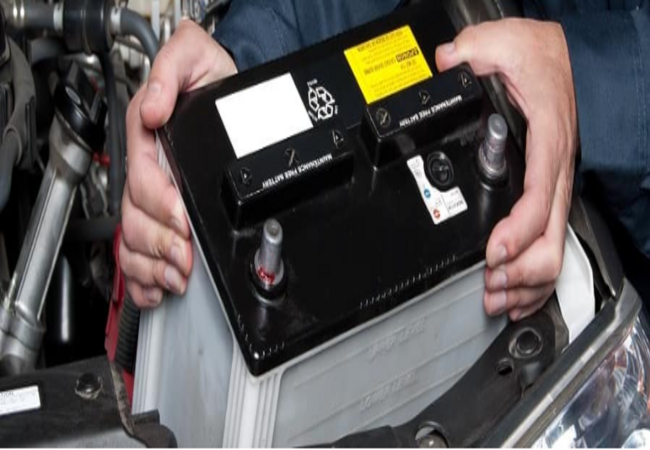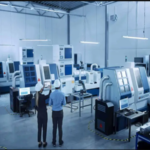Batteries are essential parts of any vehicle, like automotive batteries but they can often be overlooked.
Let’s Talk about automotive batteries that provide power to the starter motor; allowing your vehicle to start and keep running. Batteries also help to power the lights and other accessories, when the engine is not running. It is important to understand how automotive batteries work and how to maintain them in order to ensure your car runs smoothly and safely.
In this article, we’ll discuss everything you need to know about automotive batteries; from what types of batteries are available to how best to maintain them. We’ll also cover some of the common problems associated with these components, as well as some effective tips for extending their life span. By understanding automotive batteries and knowing how best to care for them, you can ensure that your car remains reliable for many years to come.
The Different Types of Automotive Batteries

The automotive world has many different types of batteries, and each serves a specific purpose. The most common types are lead-acid; AGM (Absorbed Glass Mat), gel cell, and lithium-ion.
Lead-Acid Batteries: The most widely used battery for vehicles; lead-acid batteries; are known for their reliability; affordability; and longevity. They generally last from 3 to 5 years; are considered “maintenance free”; as they require no additional maintenance or water refilling.
AGM (Absorbed Glass Mat) Batteries: AGM batteries offer improved performance and increased life compared to traditional lead-acid batteries, but they can be slightly more expensive. They are the right choice if your vehicle requires frequent starting or has a heavy electrical load.
Gel Cell Batteries: Gel cell batteries provide excellent starting power with no charge maintenance required and a long life cycle of 4 to 6 years. They are also spill-proof, making them easier to install in tight spaces in your vehicle than other types of batteries.
Lithium-Ion Batteries: Lithium-ion batteries offer the highest power output of any type of automotive battery but are more expensive than other options. This type of battery is best for high-performance vehicles due to its quick recharge rate and ability to handle rapid discharging with minimal voltage drop during peak loading.
How Work Automotive Batteries
These batteries are the power source for the majority of automotive engines. They contain a negative and positive terminal; which are connected to the engine’s starter. When the ignition is turned on; electricity flows through the system; allowing it to start.
In addition to powering the engine; automotive batteries also provide power for other electrical components in the vehicle, such as headlights and sound systems. Furthermore; they are also used to store energy generated by alternators and other sources; that can be used when needed.
Essentially; batteries convert chemical energy; into electrical energy which is then utilized by the vehicle’s systems. This process works because a series of lead plates submerged in sulfuric acid creates a reaction that sends electrons from one plate to the other; generating an electric current. The key factor in making sure this reaction continues is an electrolyte – a solution of sulfuric acid and distilled water – which must be regularly maintained in order for your battery to continue functioning accurately.
Choosing the Right Automotive Battery for Your Vehicle
Choosing the right battery is an important decision; as the wrong type can quickly lead to problems. Different vehicle types require different types of batteries while some vehicles may have their own specific requirements. To make sure you get the right battery for your car, there are a few things to consider:
Size and Type: Your vehicle’s manufacturer likely has specifications for the size and type of battery that should be used. Always follow these instructions when selecting a battery, as other sizes may not fit in the space available or may not be able to provide enough power for your vehicle’s demands. Cold Cranking Amps: The cold cranking amps (CCA) rating on the battery indicates how much power it will deliver in cold temperatures, which is necessary for most vehicles to start in cold weather. Make sure to select a battery with at least the CCA recommended by your car’s manufacturer.
Reserve Capacity: In addition to its CCA rating, a battery also has a reserve capacity rating that indicates how long it can provide power before needing to be recharged. Larger vehicles with more electrical components will need batteries with higher reserve capacities than smaller vehicles with fewer electronics.
By taking these factors into account; you’ll be able to choose an automotive battery that meets your vehicle’s needs and delivers reliable performance even in tough conditions.
Automotive Battery: Maintenance and Safety
Taking proper care of your vehicle’s battery is important for keeping it functioning properly and avoiding a host of potential problems. Ensuring your car’s battery is in good condition involves regular maintenance, such as:
Cleaning the battery terminals: Dirt and corrosion can accumulate on the battery terminals, leading to a decrease in power output. To remedy this, use a brush to clean off any dirt or debris accumulations. Checking electrolyte levels: Electrolyte is an important component of automotive batteries and its level should be checked periodically to make sure there is enough fluid in the cells.
Replacing worn-out batteries: Automotive batteries should be replaced every few years; or when they start showing signs of wear or damage.
It’s also important to be aware of potential safety issues when working with car batteries; as incorrect handling can lead to harmful explosions or burns:
Wear protective equipment while working on the battery: It’s best to wear safety goggles and gloves when dealing with car batteries to avoid the possibility of injury from acid spills or explosions.
Avoid mixing old and new batteries together: When replacing a single bad battery, it’s important not to mix it with other older batteries as this can create an imbalance in the current flow which may lead to dangerous build-ups of gas or voltage levels in one cell over another.
Disconnect the negative cable first before charging a drained battery: Always remember when recharging a drained battery, disconnect the negative cable first before connecting any charger leads, this will help avoid sparks from forming due to shifted polarity or an overcharge situation caused by a misconnected charger lead.
When Is It Time to Replace Your Automotive Battery?
It’s time to think about replacing your automotive battery if:
- Your battery is more than three years old
- Your vehicle has difficulty starting
- Your battery is showing signs of corrosion or deterioration
- The lights dim when you turn on your vehicle
- The check engine light comes on
- You hear a grinding sound when starting your vehicle
You should also consider replacing your automotive battery; if you’ve recently changed or upgraded any of the electrical components in your car; such as the alternator or starter. It’s best to avoid any electrical issues down; the line by ensuring that the new components work correctly with the existing battery.
Automotive Battery Charging and Reconditioning

These batteries like automotive batteries require regular maintenance to ensure they remain in peak condition. Charging and reconditioning are two of the most important maintenance practices for automotive batteries.
Charging
When a battery is not used; it gradually loses its charge. This can cause a decrease in performance and a decrease in the battery’s overall life span. To counter this; automotive batteries must be regularly charged; to keep them fully functional and maintained.
Reconditioning
Reconditioning refers to the process of bringing a dead or weak battery up to full power again by restoring its charge. This can be done manually or with an automated conditioner; such as those found in many automotive repair shops. The reconditioning process typically involves the use of an electrical current to restore electrolyte levels in the cells; resulting in improved performance and longer battery life.
Both charging and reconditioning are essential maintenance practices for ensuring that automotive batteries remain in top condition and perform at their best throughout their life span.
Conclusion of Automotive Batteries
These batteries mean Automotive batteries are an integral part of the modern car and are responsible for providing; The power necessary to start the engine and keep it running. Although they are designed to last for many years they can still be impacted; by extreme temperature changes; charging issues; and more. Understanding the basics of automotive batteries can help drivers make more informed decisions when it comes to replacement and maintenance. From understanding the different types of automotive batteries available to the maintenance best practices; drivers can ensure that their vehicles remain in top condition for many years.




